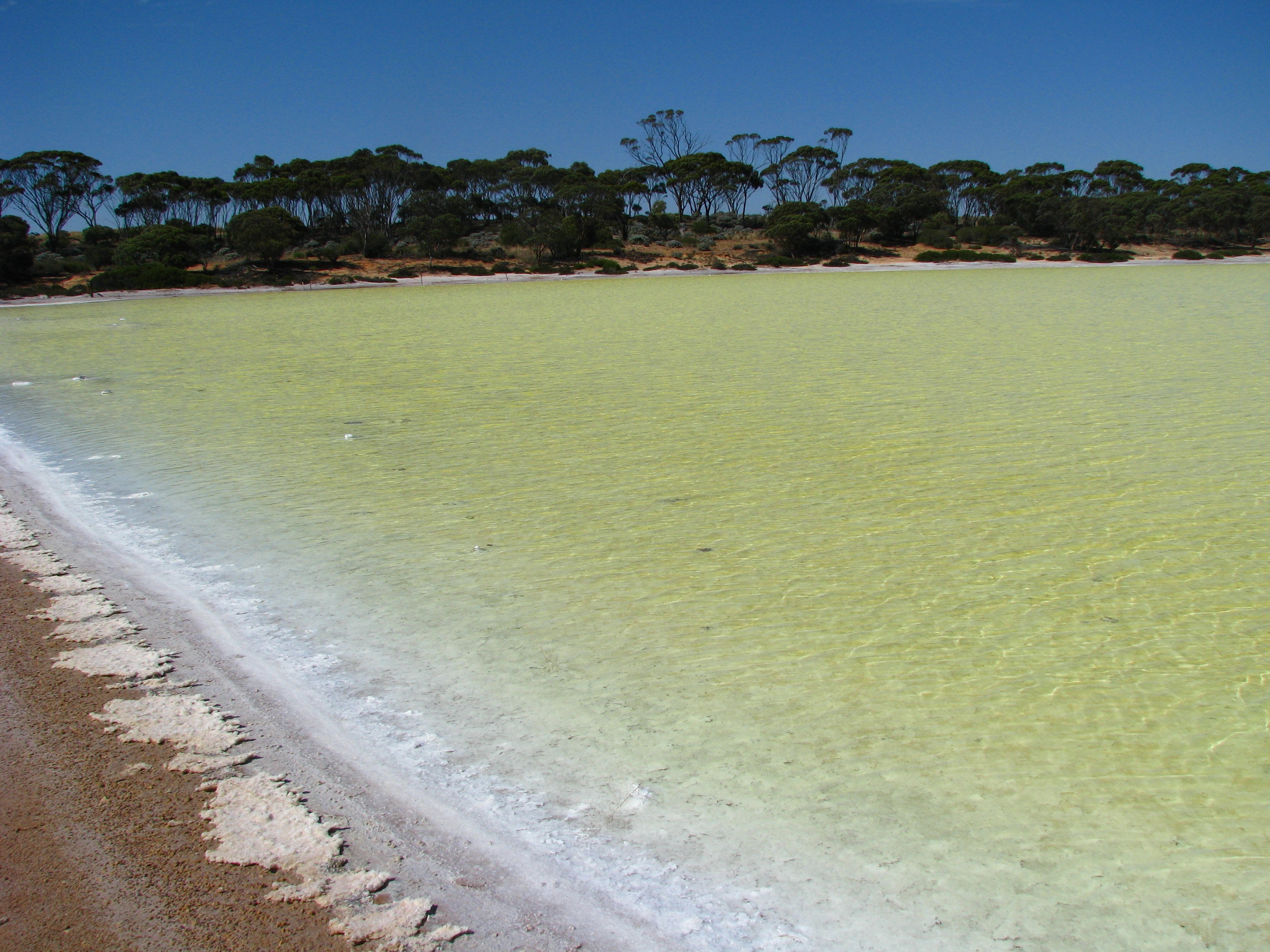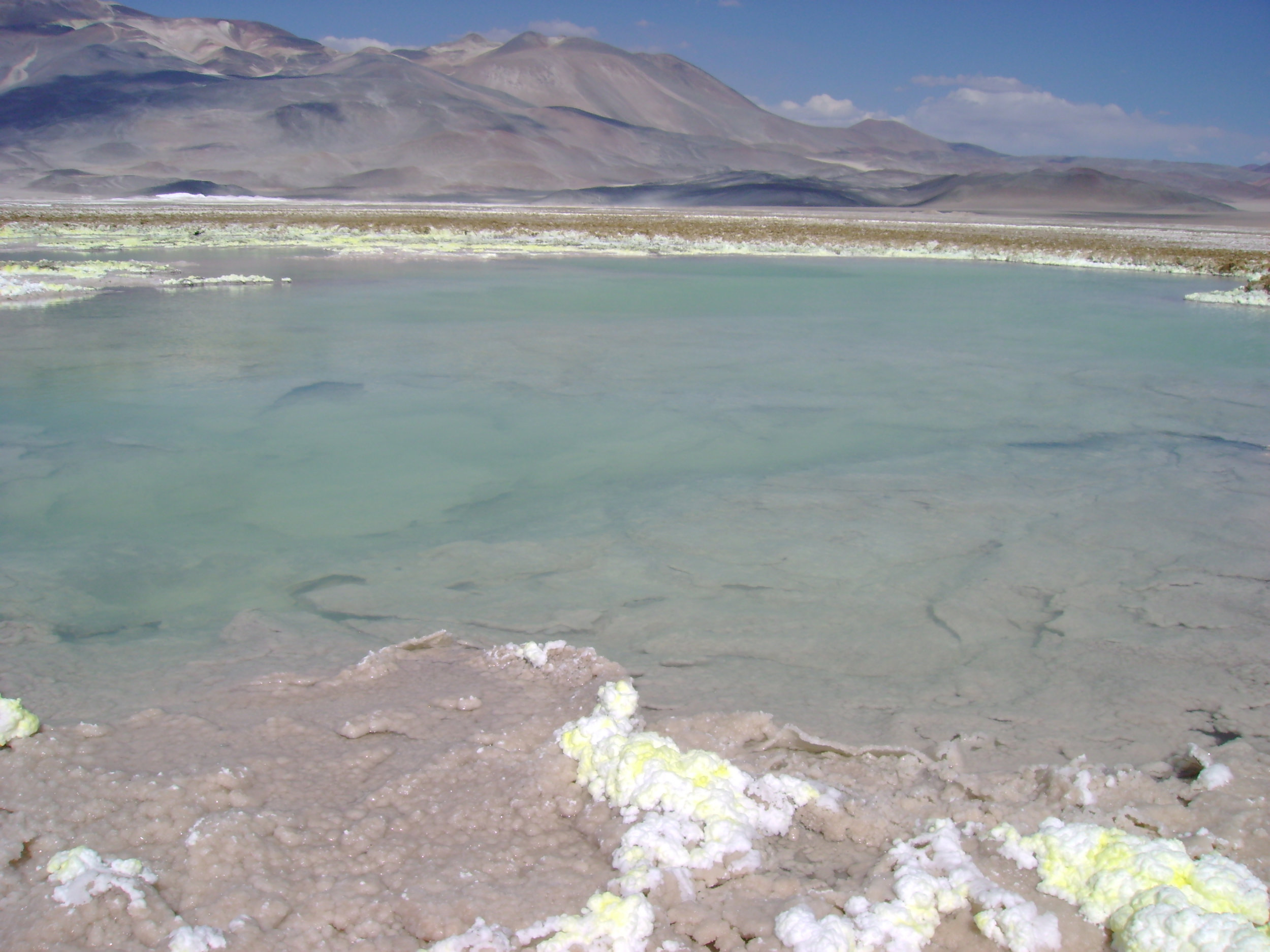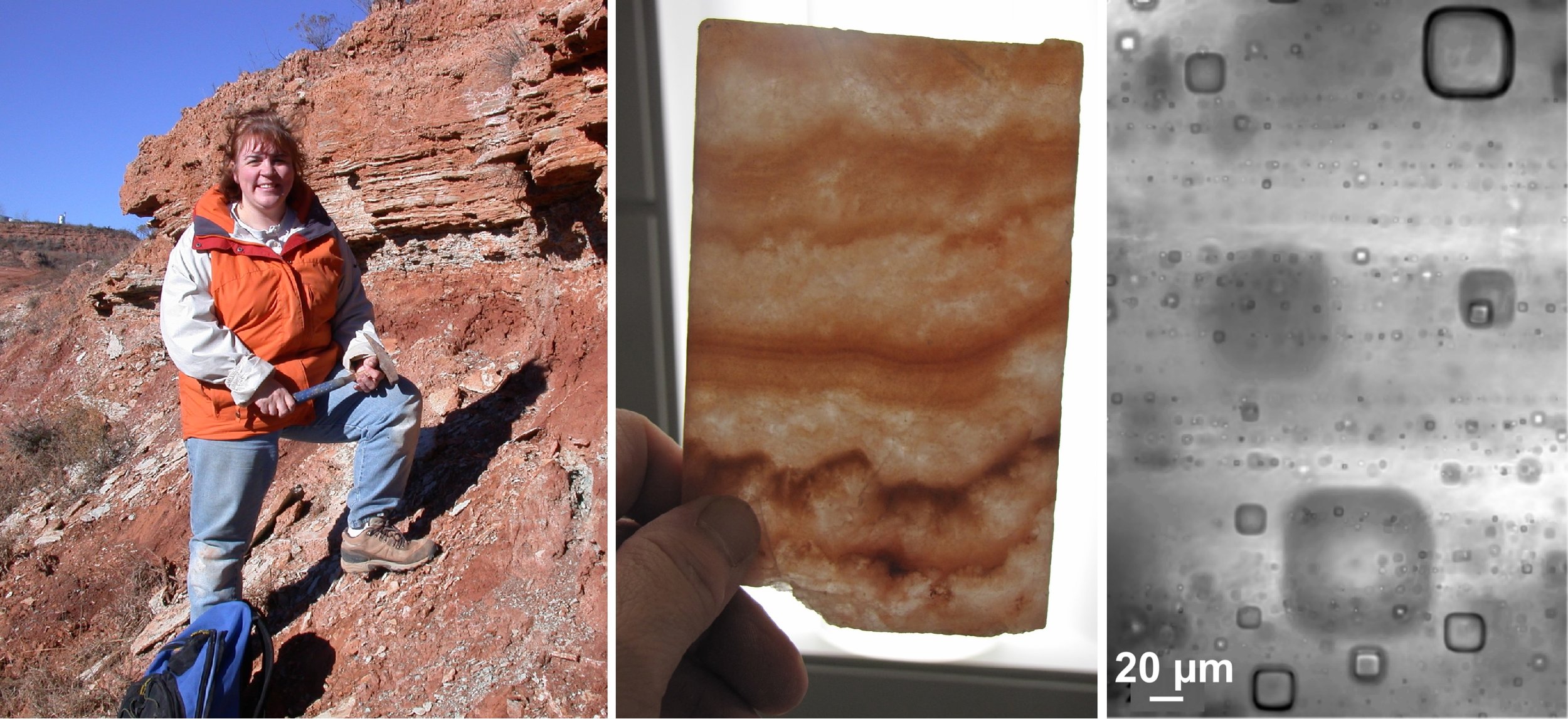modern acid saline lake systems in Western Australia
I have been studying acid saline lakes and groundwaters on the Yilgarn Craton of Western Australia since 2001. This work includes the sedimentology, mineralogy, diagenesis, water geochemistry, and life of these extreme lakes and adjacent environments. Observations show that these lakes are dynamic, undergoing flooding, evapoconcentration, and desiccation. Salinities range up to 32% total dissolved solids and pH has been measured as low as 1.4. These waters are chemically complex, with high Na, Cl, SO4, Mg, Al, Fe, and Si. Minerals made in these acid saline lakes and surrounding mudflats and sandflats include halite, gypsum, hematite, jarosite, alunite, kaolinite, and opalline silica.
Recently, 10 cores were drilled here and, with collaborators Brenda Bowen and Francisca Oboh-Ikuenobe, the depositional environments, climate, and life of southern Western Australia since the Eocene are being investigated. We are particularly interested in the evolution of such low acidity and high salinity, and the role weather, climate, and water-rock interactions have played in the formation of acid brines.
Another active project is investigating microorganisms and organic compounds in the acid lake waters and groundwaters and trapped within fluid inclusions in halite and gypsum. The combined low pH, high salinity, and fluctuating conditions makes these lakes among the most extreme terrestrial environments that host life. Collaborators on this work are Melanie Mormile, Sarah Stewart Johnson, and John Hallsworth.
Our research on Western Australian acid saline lake systems has been funded by the National Science Foundation, NASA, the National Geographic Society, and the American Chemical Society-Petroleum Research Fund.
modern acid salars in northern Chile
Two acid saline lakes fed by volcanogenic waters exist in the high Andes of northern Chile. These extreme environments are dominated by winds and chemical precipitation, nestled amongst active volcanoes. Despite extremely low pH and high salinity, microorganisms thrive here and are trapped within evaporite minerals, especially the abundant gypsum. Lesser amounts of halite, hematite, alunite, jarosite, and kaolinite are formed here.
Field work in Chile and lab work on the Chilean samples have been funded by the National Geographic Society, the American Chemical Society-Petroleum Research Fund, and NASA.
Permo-Triassic red beds and evaporites
Mid-late Permian and early Triassic red beds and evaporites in the midcontinent of the U.S., as well as in Northern Ireland, are ancient acid saline lake deposits. Stratigraphy, sedimentology, and petrography of field and core samples shows that these were ephemeral lakes surrounded by sandflats and mudflats, dunes, and desert soils. Fluid inclusion studies document Permian air temperatures (up to 73°C), Permian water chemistry (including negative pH, high salinity, and high concentrations of Al, Si, and Fe), and Permian life (such as extremophilic microorganisms trapped in fluid inclusions).
Collaborators on various aspects of this work have been Bob Goldstein, Bob Burruss, Jill Parteris, Brigitte Wopenka, Lynn Soreghan, Mike Soreghan, and Jay Zambito. This research has been funded by the National Science Foundation, The American Chemical Society - Petroleum Research Fund, and NASA.
other Paleozoic redbeds and continental deposits
I am interested in ancient continental sedimentary rocks. The Devonian Hampshire Formation in West Virginia and the Pennsylvanian Pewamo Formation of Michigan are two continental deposits that on which I've worked. Collaborator Joanne Dannenhoffer, student Jonathan Knapp, and I refined the Pennsylvanian stratigraphy of the Michigan Basin by coring and describing two new formations, the Pewamo and Haybridge formations, and debunking the “Jurassic redbed problem” of Michigan. I am an advocate for coring sedimentary rocks that represent past continental environments.
eolian - lake evaporite systems
White Sands in New Mexico are an extensive gypsum dune field composed. However, the source of the gypsum has not been well documented. We are interested in tracing types and locations of gypsum crystal formation that feeds the dunes. We are also attempting to use petrographic and fluid inclusion studies of cores to understand the evolution of this sedimentary system. We are working in collaboration with David Bustos of White Sands National Monument and are funded by the U.S. Geological Survey and the National Park Service.
Mars analogs and the search for life on Mars
Terrestrial acid saline lake and groundwater deposits are similar to sediments and sedimentary rocks on Mars in their mineralogy, sedimentary textures and sedimentary structures, and diagenetic features. The documentation of life in fluid inclusions in halite and gypsum from terrestrial acid saline lakes have significant implications for the search for life on Mars. This work is being funded by NASA.
Mars sample return
Kathy is fortunate to be a Return Sample Selection Participating Scientist for the Mars 2020 mission. The Perseverance rover is exploring Jezero crater, which once hosted a lake. The mission goals include looking for signs of past habitable environments and sampling rocks and sediment that may be examined for any possible biosignatures back on Earth.
See Kathy’s Mars 2020 profile here: https://mars.nasa.gov/people/profile/?id=23339&fbclid=IwAR2hFWqdjPCjaSYBa_xYDsJAnPzLBdwaL7f2SPJo0e2jBIaQPvno8zz0cBs








